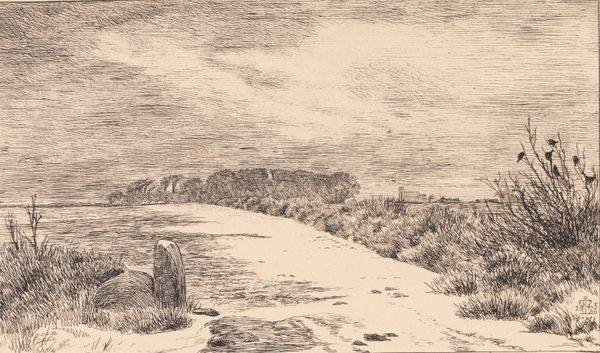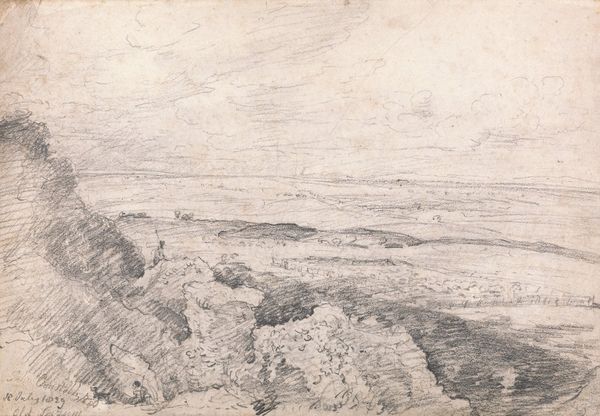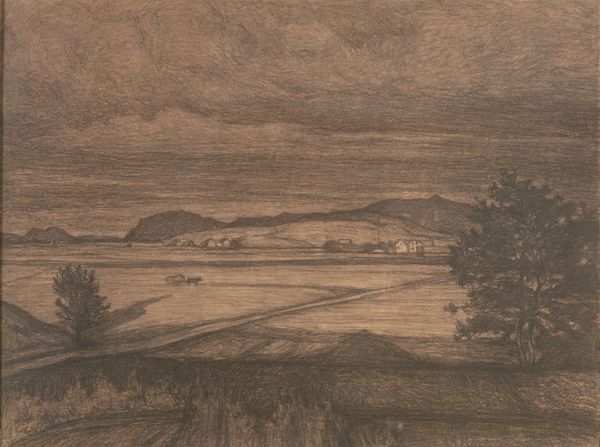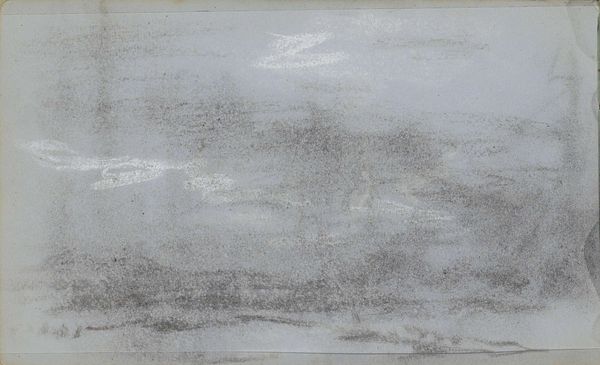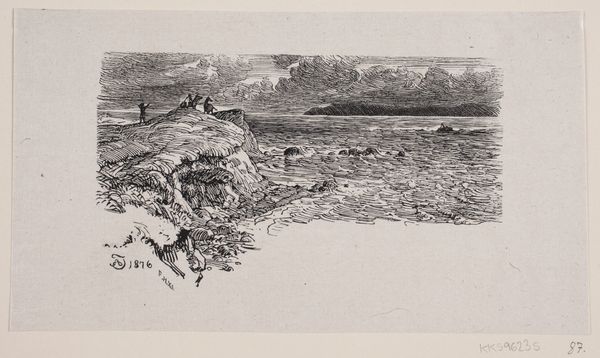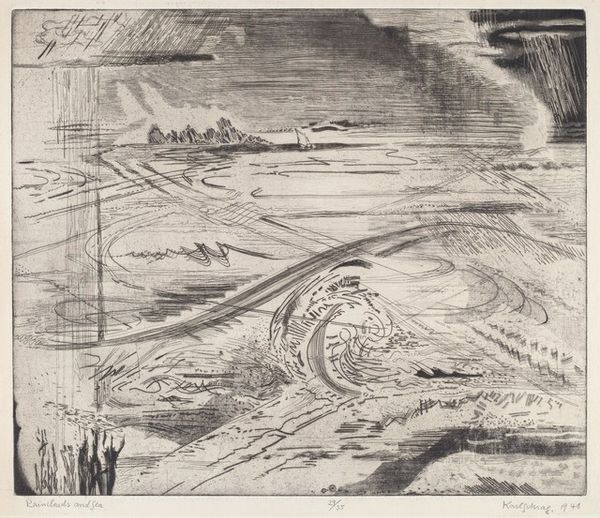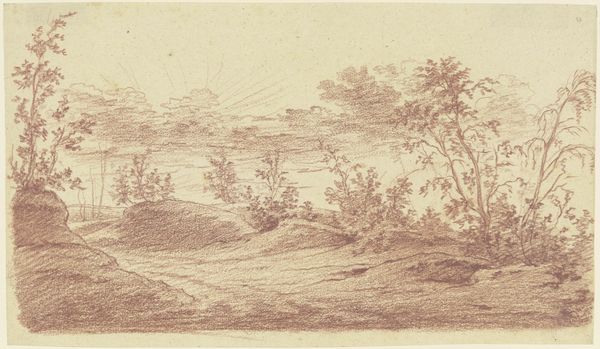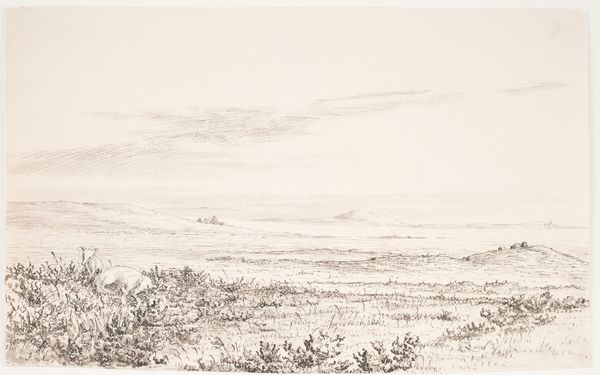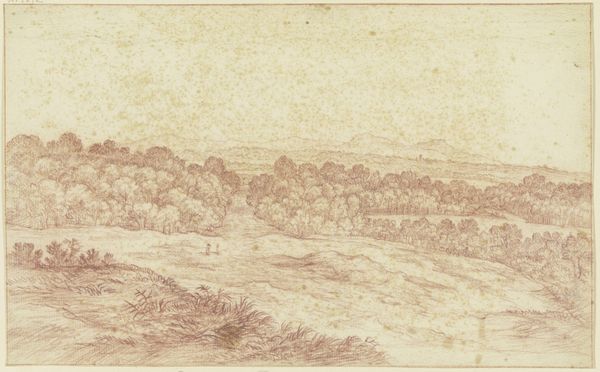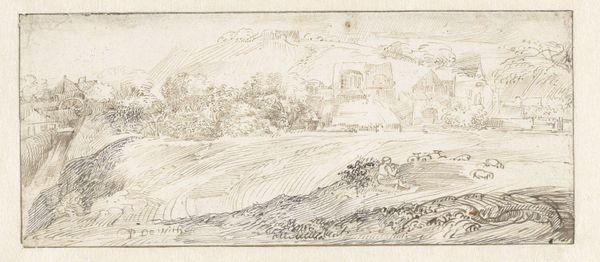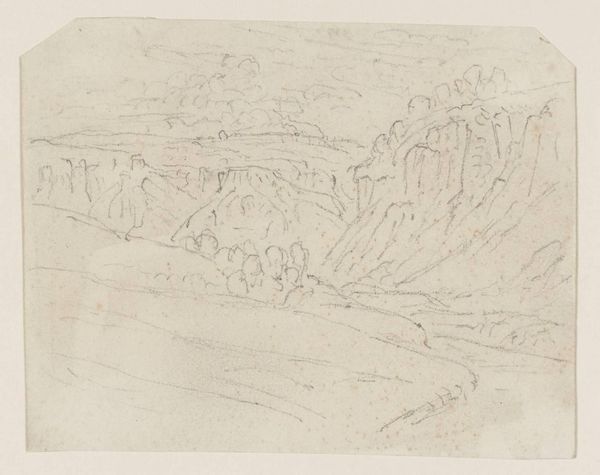
Dimensions: height 153 mm, width 230 mm
Copyright: Rijks Museum: Open Domain
Johannes Warnardus Bilders made this artwork, ‘Heide in Drente’, using pen in gray in the Netherlands. Bilders’s atmospheric sketch depicts a windswept heath in Drenthe, a province in the northeast of the Netherlands. In the 19th century, the Dutch landscape became a key element of national identity, reflecting a deep connection to the land and its people. Artists like Bilders contributed to this romanticized view of the countryside, capturing its vast open spaces, changing weather conditions, and rustic charm. The Hague School, to which Bilders belonged, emphasized realism and mood in their landscapes, often depicting everyday scenes of rural life. The institutional context of art academies and artist societies played a significant role in shaping these artistic trends, fostering a sense of national artistic community. The study of letters, diaries, and exhibition reviews from that time would offer more understanding, highlighting the artist's role in shaping cultural values and national identity through landscape painting. Art history is not just about aesthetics; it reflects the complex interplay of society, culture, and individual expression.
Comments
No comments
Be the first to comment and join the conversation on the ultimate creative platform.
